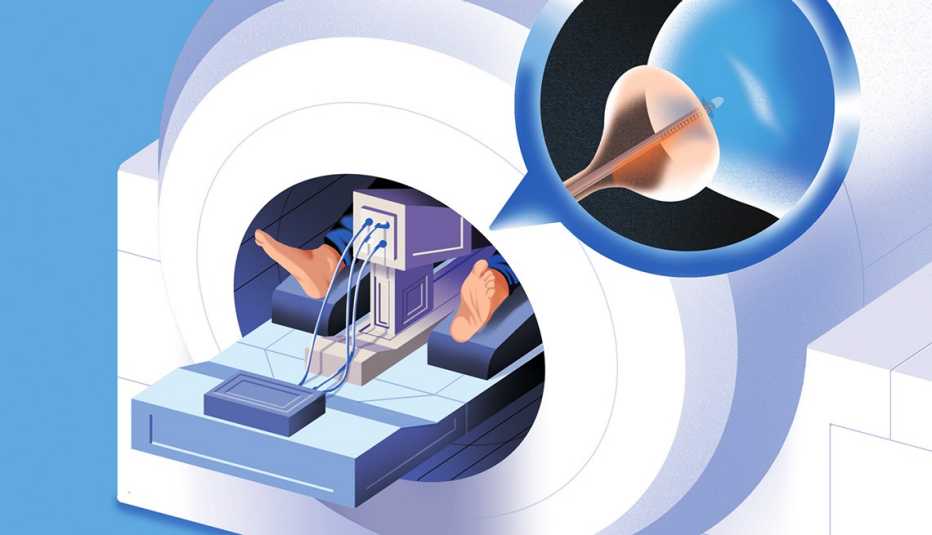Staying Fit


Tommy Saul, 57, takes prostate cancer seriously. His father died after a 12-year fight with the disease, the second-leading cause of cancer death in men. So when Saul’s annual prostate specific antigen test (a measure of prostate health) showed that his PSA levels had doubled, and a biopsy in 2022 confirmed that he had prostate cancer himself, his doctors urged radiation or immediate surgery to remove his prostate gland. Still, despite his family history, Saul hesitated. “I didn’t like the side effects — urinary incontinence and erectile dysfunction,” Saul says. “But I wanted to live a long time for my wife and our three sons. That’s when we did a lot of research.”
Saul and his wife, Autumn, decided that he was a good candidate for TULSA-Pro, an outpatient procedure cleared by the FDA in 2019 that destroys cancerous tissue from inside the prostate gland with ultrasound heat. Doctors use magnetic resonance imaging to guide the robotic procedure while a cooling catheter inserted in the rectum reduces heat exposure of nearby tissue. Recovery is generally faster than with surgery or radiation. It’s intended mostly for men with low- and intermediate-risk prostate cancer that hasn’t spread.


AARP Membership— $12 for your first year when you sign up for Automatic Renewal
Get instant access to members-only products and hundreds of discounts, a free second membership, and a subscription to AARP the Magazine.
“The goal is to minimize side effects,” says Yair Lotan, M.D., chief of urologic oncology at the University of Texas Southwestern Medical Center, in Dallas. “We can’t guarantee a risk-free experience. But with magnetic resonance imaging to guide the procedure, we can be very precise.”


In a recent study of 115 midlife and older men with low- to intermediate-risk prostate cancer who had their prostate gland completely treated via TULSA-Pro, 96 percent of participants saw their PSA levels fall by 75 percent or more within a year, 25 percent had new problems with erectile dysfunction (ED), and 11 percent reported some urinary leakage or incontinence.
By three years after their procedures, 13 percent needed additional prostate cancer treatment, but none had severe erectile problems, and 99 percent didn’t need pads for managing incontinence.
In contrast, 25 percent to 33 percent of men who undergo standard surgery or radiation treatment see their cancer return, according to the Prostate Cancer Foundation. Up to 23 percent may have lingering incontinence after surgery, and up to 50 percent may have ongoing ED a year or more after surgery or radiation. These side effects can dramatically affect a man’s quality of life.











































































More on Health
What Men Wish Their Doctors Told Them About Turning 50
5 health changes you might not expect and what to do about them
6 Body Parts You Should Never Ignore After 50
Pay special attention to these susceptible areas as you age
10 Top Sex Ed Tips for Those 50 and Older
Making love is about more than intimacy. It’s good for your health, too